It seems many of the blog topics I’ve written about over all these years seem to “connect the dots” and lead to Ian Fleming, author of the James Blond series [refer to blogs, Cynthia: World War II Mata Hari (click here), James Bond’s Lover (click here), Explosive Rats (click here), Agent Jack, “M” and the Fifth Column (click here), The Double Cross System (click here)]. Today’s topic is yet another story that has Mr. Fleming’s fingerprints all over it.
Did You Know?
Did you know it’s likely every war has its stories of elite snipers? You would if you had read several of my blogs, Lady Death (click here to read) and/or Valkoinen kuolema (click here to read). Well, the recent conflict in the Ukraine is no different. One of Ukraine’s premier military groups is their sniper division. Although snipers alone will never win a war, they can certainly help affect the outcome. That is why Ukraine’s snipers concentrate on taking out Russia’s officers. Once a Russian officer is killed, the unit he or she commanded is left without any leadership and the soldiers become disorganized and demoralized. (In the U.S. Army, noncommissioned officers would take up leadership positions in these situations.)
One of Ukraine’s sniper teams is named “Devils and Angels.” Their orders are to kill senior Russian officers and other high-profile targets. Teams of two operate in areas of extreme danger, often cut off completely from their units. One member will be a spotter, calculating distance, air humidity and temperature, and wind speed while the other handles the rifle. At night, they take turns sleeping. Ukraine claims one of their snipers took out their target at a distance of about 12,470 feet, or one third longer than the Golden Gate Bridge. It surpassed the current record by some 850 feet (I haven’t verified sniper records). Reportedly, the shot was recorded and reviewed by the Wall Street Journal.
Once his spotter had made the critical measurements and whispered, “You can,” Vyacheslav Kovalskiy pulled the trigger and waited nine seconds for the bullet to descend 330 feet to strike a Russian officer. Gun and sniper experts believe that after a distance of about 4,300 feet, a kill from a sniper’s gun is more luck than anything else.
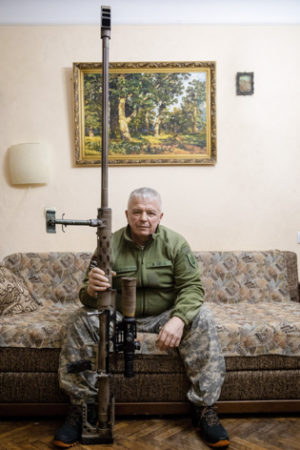
https://www.wsj.com/world/europe/ukrainian-sniper-breaks-cover-to-claim-world-record-hit-of-more-than-2-miles-2b1c820e
What did Napoléon say when asked if he wanted good generals? He said, “No, I want lucky generals.”
Let’s Meet Ian Fleming
Ian Fleming (1908−1964) was born into a wealthy and politically prominent family. Educated at Eaton College and the Royal Military College, Sandhurst, Fleming began writing at an early age and was the editor of Eaton’s magazine, The Wyvern. Following the educational phase of his life, Fleming embarked on a series of jobs including editing and reporting for the Reuters News Agency, banking positions, and financial investments (the latter two he failed at). He also became involved in multiple affairs with one resulting in a marriage proposal that was abruptly ended after Fleming’s mother threatened to cut her son out of the family will. (Fleming may have been an unsuccessful banker and stockbroker but he was certainly pragmatic.) In early 1939, Fleming accepted a job offer that would provide a basis for his future books.
The Admiralty
Rear Admiral John Godfrey (1888−1970) was the director of British Naval Intelligence Division (NID) prior to the start of World War II. Godfrey approached Fleming and persuaded him to join the intelligence unit as his personal assistant. Less than a month before the war began, Fleming reported for duty at the Admiralty Building (a.k.a. the Ripley Building) and was given the codename “17F.”
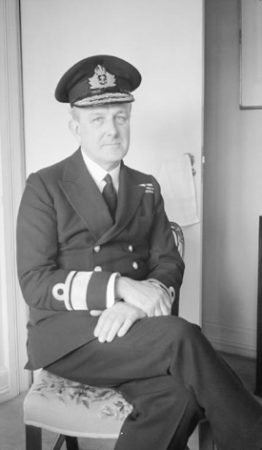
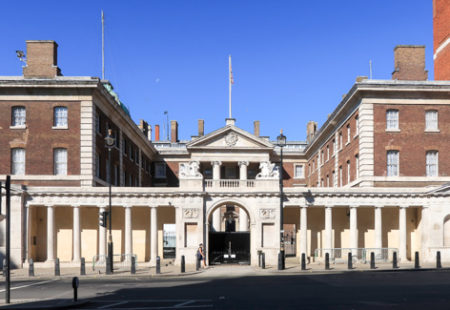
With no apparent qualifications, Fleming was commissioned in the Royal Naval Volunteer Reserve as a lieutenant and several months later, promoted to lieutenant commander. It quickly became clear why Godfrey hired Fleming. The young commander was an excellent administrator but more importantly, Godfrey used his assistant to act as the liaison between NID and other sections of His Majesty’s wartime administrative units such as the Secret Intelligence Service (SIS), Political Warfare Executive, Special Operations Executive (SOE), Joint Intelligence Committee, and the prime minister’s staff. It seems Adm. Godfrey had an abrasive personality and was “averse to making friends.” However, Commander Fleming’s real value to Godfrey and the war efforts was his ability to develop “out-of-the-box” intelligence missions.
The “Trout Memo ” and Other Missions
Shortly after the war began, Adm. Godfrey circulated a memorandum that was referred to as the “Trout Memo.” It outlined several suggested intelligence missions and according to one of my favorite authors, Ben Macintyre (refer to Recommended Reading Section below), the content of the memo was likely based on Fleming’s ideas. One of the tactics was to develop a plan to lure German U-boats and ships to floating minefields. Another idea was to plant misleading information about the Allied invasion on a corpse that would be found by the Germans. The author of the memo stated, “I understand there is no difficulty in obtaining corpses at the Naval Hospital, but of course, it would have to be a fresh one.” In 1943, “Operation Mincemeat” followed this recommended tactic.
Another Fleming plan (“Operation Ruthless”) was presented to Adm. Godfrey. It outlined a mission to obtain the codes used by the German Enigma machine. The plan called for the British to appropriate a German Luftwaffe bomber, install a crew of German speaking RAF airmen, crash the plane into the English Channel, and wait to be rescued by a German ship or U-boat. The crew would attack their rescuers and bring the boat and Enigma machine with its codes back to England. Much to Bletchley Park’s dismay, Fleming’s plan was never carried out ⏤ someone figured out the plane would probably sink very quickly before the crew could be rescued.
“Operation Goldeneye” was another Fleming concoction. Britain was afraid Germany might invade Spain which would increase the chances that Gibraltar would be lost. Working with William “Wild Bill” Donovan (1883−1959), future director of the Office of Strategic Services (OSS), Fleming set up a plan in 1941 to monitor the Spanish dictator, Gen. Francisco Franco (1892−1975) and German activities to install radar equipment and infrared cameras on the Strait of Gibraltar. Nothing ever happened and the mission was discontinued in 1943. However, after the war, Fleming purchased fifteen acres in Jamacia, built a compound he called “GoldenEye” where he wrote the 007 book series. Click here to learn more.
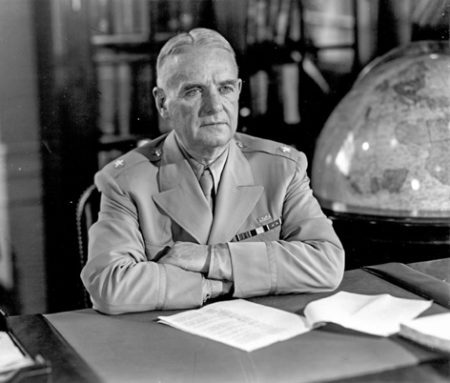

NO 30 Commando
In March 1942, Commander Fleming proposed to create an intelligence unit of commandos for the purpose of accompanying forward troops during attacks on enemy ports or naval installations and covertly gathering sensitive documents, equipment, and cyphers. (The German Abwehr had a similar unit named Marine-Einsatz-Kommando Schwarzes Meer.) By September 1942, the new unit had been authorized and was known by several names: Special Intelligence Unit (inception), 30 Commando (1943), and 30 Assault Unit, or 30AU (1944). The unit was comprised of Royal Marines (33 Troop), Army (34 Troop), Royal Air Force (35 Troop), and Royal Navy (36 Troop). Each troop was represented in all operational theaters and acted independently of one another. At its peak, about 150 men were assigned to the intelligence unit. Initially led by Fleming, command of 30AU was turned over to Quintin Riley (1905−1980) after the invasion of Normandy. Commander Fleming was not well liked by the men because he referred to them as his “Red Indians.” After Adm. Godfrey was replaced as head of NID in late 1942, Fleming’s influence began to decline.
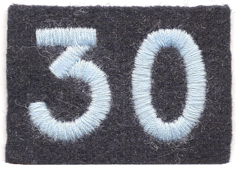
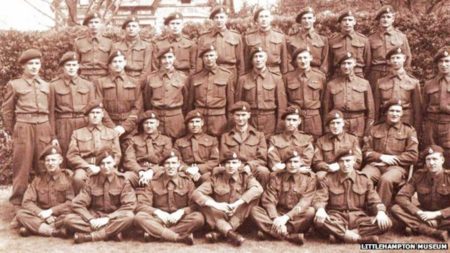
https://www.bbc.com/news/uk-england-sussex-24398930
Prior to D-Day, most of the unit’s action occurred in the Mediterranean theater. It took part in “Operation Torch,” the successful invasion of North Africa (November 1942). Using detailed maps and photographs, the men were able to capture the battle orders for the German and Italian fleets, current code books, and other documents. 30 Commando spent most of 1943 in the Greek islands, Norway, Sicily, and Corsica. In a way, 30 Commando reminds me of the “Monuments Men” units tasked with following the advancing troops through Europe and locating and recovering stolen art objects.
![Midget subs in the Baltic, presumably in Bremerhaven Harbor. These subs were captured by Patrick Dalzel-Job, a member of 30AU. Photo by anonymous (c. April 1945). Private collection. Courtesy of Guy Allan Farrin. “30 [Commando] Assault Unit” (www.30au.co.uk). Ian Fleming, James Bond author, was commissioned into the Royal Navy Volunteer Reserve where he demonstrated his ability to develop “out-of-the-box” intelligence missions. Read more at #StewRossDiscovers. Midget subs in the Baltic, presumably in Bremerhaven Harbor. These subs were captured by Patrick Dalzel-Job, a member of 30AU. Photo by anonymous (c. April 1945). Private collection. Courtesy of Guy Allan Farrin. “30 [Commando] Assault Unit” (www.30au.co.uk).](https://stewross.com/wp-content/uploads/2024/01/Blog-330-3-301x450.jpg)
Renamed 30 Assault Unit, the intelligence unit returned to England to prepare for the June 1944 invasion of France. 30AU took part in D-Day with one troop landing on Juno Beach and capturing a German radar station north of Caen. One troop led by RAF Squadron Leader David Nutting landed at Utah Beach with its mission to examine suspected V-1 rocket sites. Another 30AU troop helped liberate Cherbourg and capture the German Kriegsmarine (Navy) intelligence headquarters located in the Villa Maurice.
![Captured German Coastwatcher radar near lighthouse at Cap de Carterêt, France. Photo by anonymous (c. July 1944). National Archives. Courtesy of Guy Allan Farrin. “30 [Commando] Assault Unit” (www.30au.co.uk). Ian Fleming, James Bond author, was commissioned into the Royal Navy Volunteer Reserve where he demonstrated his ability to develop “out-of-the-box” intelligence missions. Read more at #StewRossDiscovers. Captured German Coastwatcher radar near lighthouse at Cap de Carterêt, France. Photo by anonymous (c. July 1944). National Archives. Courtesy of Guy Allan Farrin. “30 [Commando] Assault Unit” (www.30au.co.uk).](https://stewross.com/wp-content/uploads/2024/01/Blog-330-5-450x298.jpg)
![Block house w.s.w. of Granville lighthouse. Site of German radar removed by 30AU. Photo by anonymous (2 August 1944). National Archives. Courtesy of Guy Allan Farrin. “30 [Commando] Assault Unit” (www.30au.co.uk). Ian Fleming, James Bond author, was commissioned into the Royal Navy Volunteer Reserve where he demonstrated his ability to develop “out-of-the-box” intelligence missions. Read more at #StewRossDiscovers. Block house w.s.w. of Granville lighthouse. Site of German radar removed by 30AU. Photo by anonymous (2 August 1944). National Archives. Courtesy of Guy Allan Farrin. “30 [Commando] Assault Unit” (www.30au.co.uk).](https://stewross.com/wp-content/uploads/2024/01/Blog-330-6-450x314.jpg)
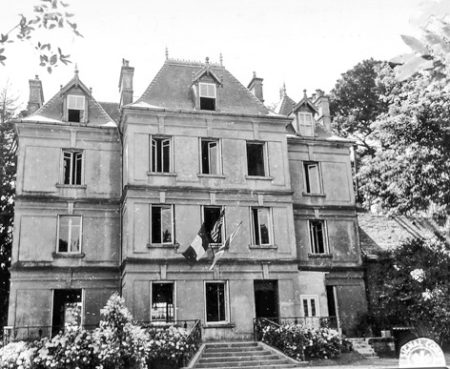
As the Allies solidified their positions in Normandy and began the breakout in August, 30AU followed the U.S. 3rd Army. Despite assisting in the liberation of Rennes, Brest, and Nantes, their bounty of documents was not significant. However, the unit struck gold when they followed Gen. Leclerc’s armored division into Paris. Crossing the relatively unimpeded Pont Mirabeau, the men forcibly captured Château de la Muette, Adm. Karl Dönitz’s (1891−1980) former headquarters where they found thirty tons of documents. Before the Germans surrendered the city, AU30 seized an acoustic torpedo factory and warehouses containing the experimental weapons and technical documents.

![German Naval sub-headquarters captured by AU30 with staff officers surrendering. Photo by anonymous (26 June 1944). National Archives. Courtesy of Guy Allan Farrin. “30 [Commando] Assault Unit” (www.30au.co.uk). Ian Fleming, James Bond author, was commissioned into the Royal Navy Volunteer Reserve where he demonstrated his ability to develop “out-of-the-box” intelligence missions. Read more at #StewRossDiscovers. German Naval sub-headquarters captured by AU30 with staff officers surrendering. Photo by anonymous (26 June 1944). National Archives. Courtesy of Guy Allan Farrin. “30 [Commando] Assault Unit” (www.30au.co.uk).](https://stewross.com/wp-content/uploads/2024/01/Blog-330-7-450x294.jpg)
![German soldiers surrendering to AU30. Photo by Patrick Dalzel-Job or Sgt. Bremerton (c. June/July 1944). Private collection. Courtesy of Guy Allan Farrin. “30 [Commando] Assault Unit” (www.30au.co.uk). Ian Fleming, James Bond author, was commissioned into the Royal Navy Volunteer Reserve where he demonstrated his ability to develop “out-of-the-box” intelligence missions. Read more at #StewRossDiscovers. German soldiers surrendering to AU30. Photo by Patrick Dalzel-Job or Sgt. Bremerton (c. June/July 1944). Private collection. Courtesy of Guy Allan Farrin. “30 [Commando] Assault Unit” (www.30au.co.uk).](https://stewross.com/wp-content/uploads/2024/01/Blog-330-8-450x370.jpg)
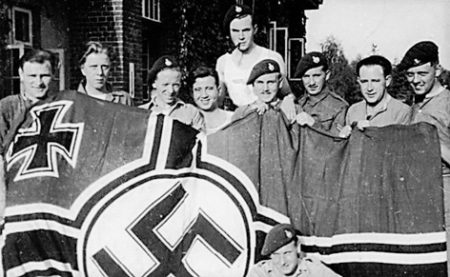
![Starboard after D/Cs on the captured German Vorpostenboot 212. Photo by anonymous (c. July 1944). National Archives. Courtesy of Guy Allan Farrin. “30 [Commando] Assault Unit” (www.30au.co.uk). Ian Fleming, James Bond author, was commissioned into the Royal Navy Volunteer Reserve where he demonstrated his ability to develop “out-of-the-box” intelligence missions. Read more at #StewRossDiscovers. Starboard after D/Cs on the captured German Vorpostenboot 212. Photo by anonymous (c. July 1944). National Archives. Courtesy of Guy Allan Farrin. “30 [Commando] Assault Unit” (www.30au.co.uk).](https://stewross.com/wp-content/uploads/2024/01/Blog-330-4-450x316.jpg)
AU30’s contribution in liberating France and Belgium (especially coastal ports) yielded an immeasurable amount of intelligence information. One of their latter assignments was to target German scientists (click here to read the blog, Hang ‘Em or Hire Them). The intelligence unit was responsible for the capture/surrender of hundreds of German soldiers. One of the AU30 units was present in Flensberg when Adm. Dönitz, Albert Speer, and Gen. Alfred Jodl were captured. After the Germans surrendered in May 1945, 30AU was deployed to the Pacific theater but never saw action. After the Japanese surrendered in August, the 30AU men were sent to Singapore and Hong Kong where they were active in intelligence gathering.
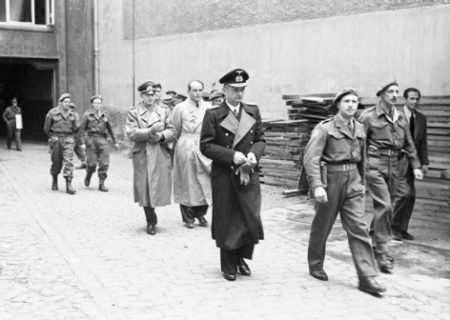
Target Force
Another intelligence unit that Fleming had input on was “Target Force,” or T-Force. Due to the success of 30AU, it was determined a separate unit was needed to guard the captured assets. This unit was formed by the British 5th Battalion, King’s Regiment.
T-Force’s mission was to guard and secure documents, persons, and equipment. It was to secure targets of interest including laboratories, research centers, and the personnel of the facilities. In Kiel, Germany, T-Force secured the research center responsible for the engines used in the V-2 rockets, Messerschmitt Me 163 fighters, and the high-speed XVII U-boats known as “Walterboats.” It is likely that Fleming used information from T-Force as a basis for his novel, Moonraker.
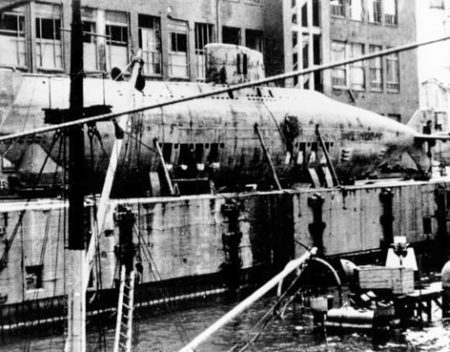
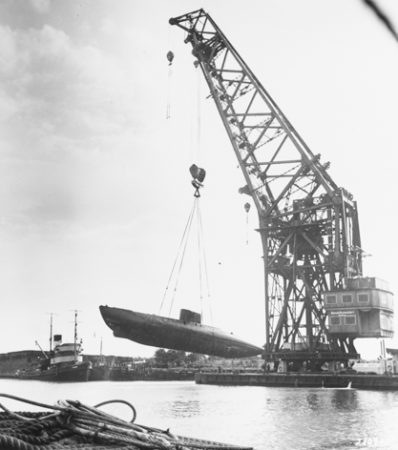
Post War
30 Assault Unit was disbanded in 1946. However, its history is carried on by the 30 Commando Information Exploitation Group formed in 2010 by the Royal Marines.
Ian Fleming was demobilized in May 1945 but remained in the reserves until 1952. He obtained employment with The Sunday Times and spent three months every year in Jamaica at GoldenEye. Fleming’s first book, Casino Royale, was begun in January 1952 at his Jamaican estate. This was followed by eight other Bond books (two more were published posthumously). Fleming was a heavy smoker and drinker and suffered from heart disease. He died from a heart attack at the age of fifty-seven.
Images
Images of Ian Fleming are owned and controlled by Ian Fleming Publications Ltd, The Ian Fleming Estate, and other U.K. image repositories. I have requested permission to use some of these images but unfortunately, there is a hefty fee to use them in the blog. I don’t pay to use images in these blogs since we make no money on the blog (as I’ve pointed out in the past). So, I apologize for the relative lack of photos in this blog, especially a dearth of Ian Fleming images.
I do want to thank Guy Allan Withew Farrin for his kind permission to use some images contained in his wonderful web site devoted to the 30 Commando Unit: 30 [Commando] Assault Unit. Click here to visit the web-site. Also, thanks to Dave Roberts for helping to fill in image captions.
As an aside, many of the official documents on 30 Commando Unit/30AU Unit remain classified by the British government.
Next Blog: “Plan Dog”
Correspondence and Commentary Policy
We welcome everyone to contact us either directly or through the individual blogs. Sandy and I review every piece of correspondence before it is approved to be published on the blog site. Our policy is to accept and publish comments that do not project hate, political, religious stances, or an attempt to solicit business (yeah, believe it or not, we do get that kind of stuff). Like many bloggers, we receive quite a bit of what is considered “Spam.” Those e-mails are immediately rejected without discussion.
Our blogs are written to inform our readers about history. We want to ensure discussions are kept within the boundary of historical facts and context without personal bias or prejudice.
We average about one e-mail every two days from our readers. We appreciate all communication because in many cases, it has led to friendships around the world.
★ Read and Learn More About Today’s Topic ★
Farrin, Guy Allan. Beau Béte: The true story of a Royal Marine sniper assigned to Ian Fleming’s WWII intelligence unit. Self-published, 2020.
Farrin, Guy Allan. The Official History of 30AU: 30 Commando Assault Unit. Self-published, 2020.
Fleming, Ian. Moonraker. New York: Macmillan Co., 1955.
Hampshire, A. Cecil. The Secret Navies. London: Sphere Books, 1980.
Jeffery, Keith. MI6: The History of the Secret Intelligence Service 1909−1949. London: Bloomsbury, 2010.
Lycett, Andrew. Ian Fleming. New York: St. Martin’s Press, 2013.
MacDonald, Alistair and Daniel Michaels. Ukraine’s Elite Snipers Fight Russians, Bullet by Bullet. Wall Street Journal, 30 August 2023. Click here to read the article.
Macintyre, Ben. For Your Eyes Only: Ian Fleming + James Bond. London: Bloomsbury Publishing, 2009.
Macintyre, Ben. Operation Mincemeat: How a Dead Man and a Bizarre Plan Fooled the Nazis and Assured an Allied Victory. New York: Broadway Books, 2010.
McCormick, Donald. 17F: The Life of Ian Fleming. London: Peter Owen Publishers, 1994.
Nutting, David and Jim Glanville. Attain by Surprise: The Story of 30 Assault Unit. Chichester, U.K.: David Colver publisher, 1997.
Rankin, Nicholas. Ian Fleming’s Commandos: The Story of the Legendary 30 Assault Unit. Oxford U.K.: Oxford University Press, 2011.
Roberts, Dave. 30 (Commando) Assault Unit. Combined Operations. Click here.
Simmons, Mark. Ian Fleming’s War: The Inspiration for 007. Cheltenham, U.K.: The History Press, 2020.
Disclaimer:
There may be a chance that after we publish this particular blog, the video links associated with the blog are no longer accessible. We have no control over this. Many times, whoever posts the video has done so without the consent of the video’s owner. In some cases, it is likely that the content is deemed unsuitable by YouTube. We apologize if you have tried to access the link and you don’t get the expected results. Same goes for internet links.
What’s New With Sandy and Stew?
Starting in March, we will publish our blogs every three weeks. The bi-weekly blogs have been published over the past twelve years without once missing a deadline. However, we are finding it difficult to meet other goals (e.g., finishing and publishing new books) especially with our heavy travel schedule.
Thank you to all of you who subscribe to our blogs. It seems there isn’t a day that goes by where we don’t increase our readership. Please let your history buff friends and family members know about our blog site and blogs.
Someone Is Commenting On Our Blogs
Thank you to Kim F. for commenting on our recent blog, Logistics Genius (click here to read). He thought it was one of the best blogs so far. Kim, it was fun to write about Gen. Clay because I had no idea who he was and certainly, the impact he had on so many iconic events during the early years of the Cold War.
Also, I appreciated the e-mail from Steve W. concerning our blog, New Forest Airfields (click here to read). Steve is a trustee for the FONFA Heritage Center which I hope all of you can visit on your next trip to England. I know Sandy and I will be there soon.
If there is a topic you’d like to see a blog written about, please don’t hesitate to contact me. I love hearing from you so keep those comments coming.
Shepherd.com is like wandering the aisles of your favorite bookstore.
Do you enjoy reading? Do you have a hard time finding the right book in the genre you enjoy? Well, Ben at Shepherd.com has come up with an amazing way to find that book.
Shepherd highlights an author (like me) and one of their books. The author is required to review five books in the same genre. So, if a reader is interested say in cooking, they can drill down and find specific books about cooking that have been reviewed by authors in that category. Very simple.
If you like to read, I highly recommend you visit Shepherd.com. If you do, please let me know what you think and I will forward Ben any suggestions or comments you might have.
Click here to visit Shepherd’s website.
Click the books to visit Stew’s bookshelf.
Check out Stew’s new bookshelf on the French Revolution.
Share This:
Follow Stew:
Find Stew’s books on Amazon and Apple Books.
Please contact Stew directly for purchase of books, Kindle available on Amazon. Stew.ross@Yooperpublications.com or Contact Stew on the Home Page.
Please note that we do not and will not take compensation from individuals or companies mentioned or promoted in the blogs.
 Walks Through History
Walks Through History
Copyright © 2024 Stew Ross








